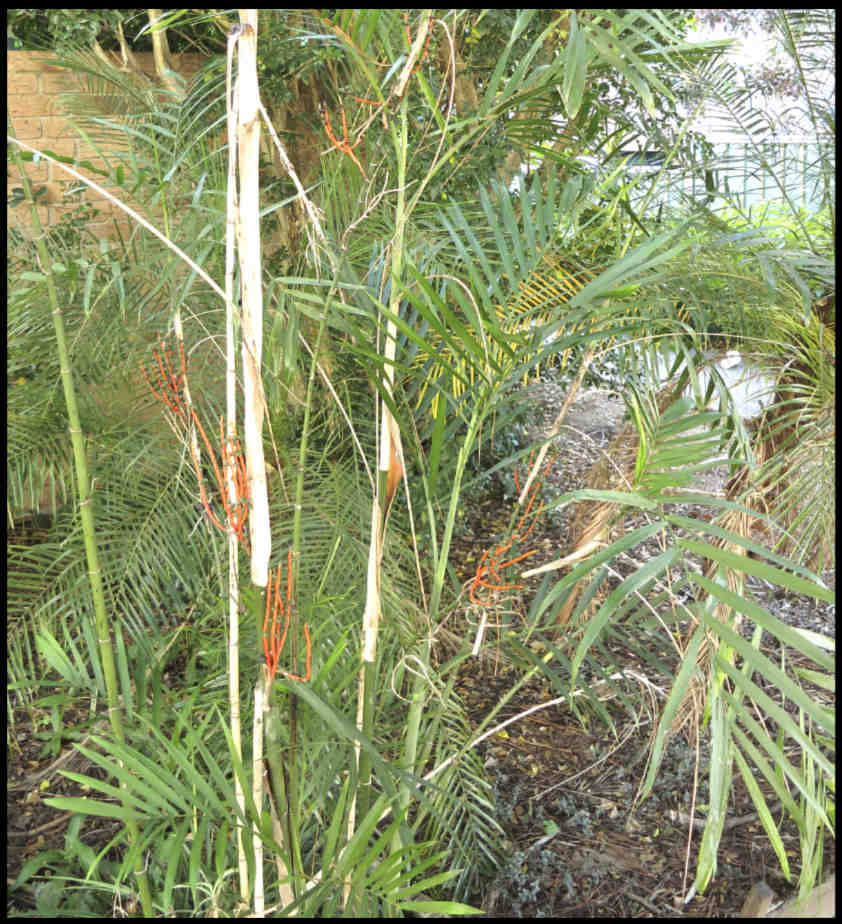There are 106 species native to Mexico and the tropical Americas.
Most are small to medium solitary or clumping plants.
Slender stems are mainly erect but some are prostate without rooting at the nodes.
Others have no stem and a few are climbers.
Leaf sheaths cover most of the stem but eventually fall off.
When they do fall they leave prominent ring scars on the trunk.
There are no spines or thorns.
Leaves are on a short to long petiole with a flattened upper surface.
The leaf sheaths initially have their edges fused but they later split.
The midrib of the blade may be angled with the upper surface flat.
Entire blades are rare and there are some that are bifid (deeply split into 2 lobes).
Most leaves are pinnate, or pinnatisect when the divisions do not reach the midrib.
The wide to narrow leaflets (pinnae) are sometimes oblique.
Leaflets can be in 1 or more planes and they commonly have 1 or more folds.
The terminal pair of leaflets are often wider than the others.
Each leaf axil can have 1 or a few inflorescences above or below it.
These can be an erect spike or branch to form a panicle.
The usually long peduncles have up to 7 bracts or spathes.
The small lower or outer bract is the tubular prophyll.
The prophyll and the longer papery peduncular bracts all have bifid tips.
Spathes persist on the fruit.
The long or short inflorescence midrib is green or orange.
The small spirally arranged flowers are unisexual.
Male and female flowers are on different plants.
Both sexes have 3 sepals and petals that may be free or fused at the base.
They have no pedicel and some are partially sunken into the midrib.
Male and female inflorescences may be similar or markedly different.
Male flowers have 6 stamens with dorsifixed anthers.
There is a tiny sterile ovary (pistillode).
Female flowers have 6 tiny scale-like staminodes.
The ovary of 3 fused carpels has 3 locules each with 1 ovule.
Any style is very short and indistinct.
Fruit are a small round or oblong drupe with the stigma remnants at the base.
J.F.


